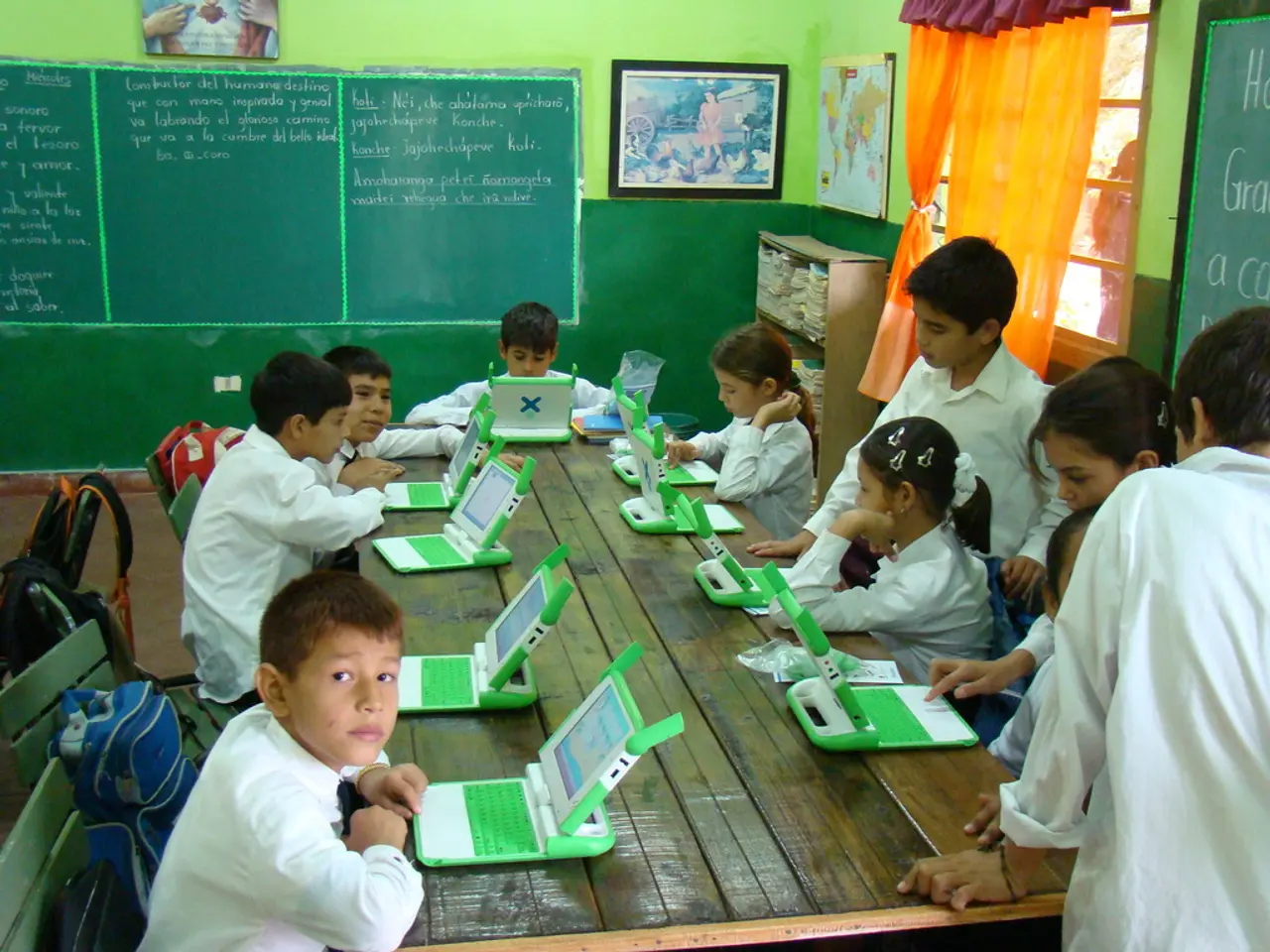Strategies for Integrating Conventional Studying with Digital English Learning Tools
In the modern age of technology, English learners have a wealth of resources at their fingertips to enhance their language skills. This article explores the benefits of integrating traditional English learning methods with online resources for a more comprehensive and engaging learning experience.
Online forums and language exchange communities provide platforms for practicing speaking and writing skills with native speakers or other learners. Resources like YouTube, iTalki, Tandem, and podcasts offer diverse materials for listening and speaking practice. To make the most of these resources, learners should establish a balanced routine that includes dedicated times for traditional study (such as grammar, vocabulary, and textbook exercises) and for engaging with online digital tools (such as interactive apps, podcasts, and language exchange platforms).
Digital media, like videos, blogs, and podcasts, expose learners to current usage, idioms, and real-world English, complementing the structured learning of traditional materials. Language learning apps that use gamification and adaptive learning technologies, such as Duolingo, further enhance engagement and allow learners to progress at their own pace.
Blended learning environments, where face-to-face teaching is supplemented with online collaboration tools and virtual communities, can promote motivation, participation, and personalized learning tailored to student needs and learning styles. These immersive digital settings facilitate interaction beyond the classroom, supporting socio-emotional and cognitive development in language acquisition. However, to maximize effectiveness, adequate access to technology and proper training for both teachers and learners are essential.
Practical implementation may involve traditional study sessions focusing on grammar and vocabulary using textbooks, scheduled online practice involving listening and speaking apps, online quizzes, language exchange forums, or MOOCs, using interactive digital media to cover contemporary English usage and cultural contexts, and teachers integrating e-books, digital worksheets, and online assessments into their curriculum.
Websites like Grammar Girl and Purdue OWL offer detailed explanations and tips on English grammar and writing skills, while Grammarly provides real-time writing feedback, and Purdue OWL offers comprehensive guides and practice exercises for grammar mastery. Massive Open Online Courses (MOOCs) can be incorporated into curricula as supplementary materials.
Digital flashcard apps like Anki employ spaced repetition techniques to enhance vocabulary retention, and online forums and communities offer platforms for learners to ask questions and receive explanations directly from peers or more experienced users. Incorporating online resources allows for more self-directed learning, enabling exploration of areas that interest you beyond the classroom syllabus.
The key to effectively combining traditional study methods with online English resources is finding the right balance and using each method to complement the other. By leveraging the reliability and structure of traditional methods with the flexibility, personalization, and engagement of online resources, learners can enrich their language learning experience and progress more effectively towards their language goals.
Language exchange platforms like Tandem and iTalki offer opportunities for learners to immerse themselves in real-world English conversations, thus integrating technology into their lifestyle for education-and-self-development. Resources such as language learning apps, like Duolingo, and interactive media, including videos, blogs, and podcasts, provide unique material for enhancing listening and speaking skills.




